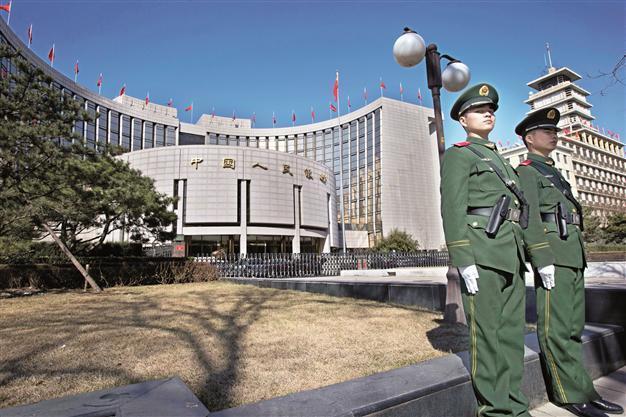Shadow banking in China leads squeeze
SHANGHAI - Reuters

This file photo shows Chinese paramilitary policemen standing on duty outside the People’s Bank of China (the central bank) in Beijing, China. AFP photo
There is ample liquidity in China and the latest spike in money market rates was a result of market distortions caused by widespread speculative trading and shadow financing, state news agency Xinhua said in a commentary today.China’s central bank faced down the country’s cash-hungry banks on June 21, letting interest rates again spike to extraordinary levels of some 25 percent for some banks, as it steps up the pressure to rein in rampant informal lending.
Comments from Xinhua, seen as a government mouthpiece, confirm analysts’ suspicions that the central bank’s funding squeeze was aimed at reducing non-bank lending, or shadow banking, which has boomed in recent years.
The cash crunch engineered by the central bank was intended as a warning to overextended banks, but it has also fed fears that a miscalculation could trigger a full-blown crisis.
Xinhua said there was sufficient liquidity in the market, with data showing broad M2 money supply rose 15.8 percent in May from a year earlier, and the total social financing aggregate, a broad measure of liquidity in theeconomy, was more than 1 trillion yuan.
‘Banks are short on cash’
“The banks are short on cash, the stock market and small- and medium-sized enterprises are short on cash, but there is ample money supply in the market,” it said in the commentary.
“Many large companies are still spending heavily and making large purchases in wealth management products. There is also a lot of hot money seeking speculative investments and private lending is still widespread.”
















